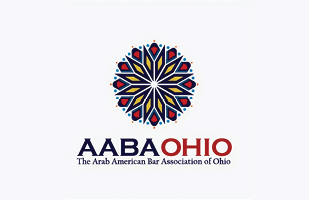New Bar Association Emphasizes Diversity, Inclusivity

The Arab American Bar Association of Ohio follows fellow affinity groups to serve those with a common identity, but also create an avenue to work with other social and legal organizations.

The Arab American Bar Association of Ohio follows fellow affinity groups to serve those with a common identity, but also create an avenue to work with other social and legal organizations.
Greater societal awareness paired with a purpose to help legal and local communities are the foundations for the state’s newest bar association.
After 10 years of informal meetings, the Arab American Bar Association of Ohio (AABA-Ohio) was recently created to aid the growing number of Arab American attorneys in the state.
“We needed a place for them to act as a collective and engage with the community at large. We needed a place to serve as the resource for law schools and young attorneys of Arab American descent,” said vice president Majeed Makhlouf, a Cleveland-based attorney and former Cuyahoga County law director.
AABA-Ohio follows several other affinity bar associations in Ohio formed to gather opportunities for people who share a common identity – such as women, Blacks, Hispanics, and Asian Americans – but also to act as a bridge to working with other entities for the betterment of all Ohioans. Social and legal engagement is among these associations’ missions, which also include mentorship and community service.
“While we have programming and initiatives focused on our members, we also regularly collaborate with other affinity, state, and local bar associations to amplify our voice and collectively work towards promoting diversity and inclusion,” said Shweta Chaubey, the president of the Asian Pacific American Bar Association of Central Ohio, which started in 2006.
According to a 2010 American Community Survey estimate – a demographic survey program conducted by the U.S. Census Bureau – Ohio has the eighth-largest Arab population in the country with approximately 65,000 people. The Arab American Institute – a nonprofit organization that focuses on the issues and interests of Arab Americans nationwide – estimates the state’s populace is more than 197,000.
A large reason for the discrepancy is the lack of an Arab option in the U.S. census questionnaire about a person’s origin. The only way Arab individuals can properly identify themselves is by printing the identifier under “some other race.” Distorting the numbers further is the categorization of two Arab ethnicities, Lebanese and Egyptian, which are cited as examples of “white.”
It’s an issue the group’s leadership says it wants to bring to the attention of the Ohio Supreme Court. The intention would be to convince the Supreme Court to include a choice for Arab American in the identification box on attorney registration forms.
“This would enable us to know how many Arab American attorneys are in Ohio, where they are located, and where we need to spend more effort and resources to grow the number of Arab American lawyers in underrepresented parts of the state,” Makhlouf said.
With social turmoil being increasingly visible, the AABA-Ohio’s leaders feel they possess a valuable voice from personal and professional experiences to aid in conflicts, and to bring light to similar civil struggles impacting Arab Americans. Those issues encompass racial and ethnic justice, diversity in the workplace, religious freedom, as well as criminal justice and immigration reform.
“We will serve to strengthen the Arab American attorney’s voice as we join the Ohio legal community to tackle these important societal and legal issues,” Makhlouf said.
Regarding services to citizens, the group intends to use its position and expertise as a liaison to courts. With a lack of qualified Arabic translators certified by the state’s highest court, the association says it will work to identify capable people and assist them with the certification process.
When it comes to long-term goals, AABA-Ohio says it hopes to work with the Supreme Court’s Commission on Continuing Legal Education to mandate diversity training for the nearly 44,000 lawyers in the state. The depths of their recommendations would extend beyond race and ethnicity into gender identity, workplace inclusion, and implicit bias.
“This is not another singular skill set. We’re talking about a core value of the profession. We want people to be exposed to think about those issues and be exposed to them,” Makhlouf said.


